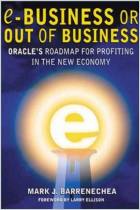Melden Sie sich bei getAbstract an, um die Zusammenfassung zu erhalten.

Melden Sie sich bei getAbstract an, um die Zusammenfassung zu erhalten.
Paul May
The Business of E-Commerce
From Corporate Strategy to Technology (Breakthroughs in Application Development)
Cambridge UP, 2000
Was ist drin?
If you don’t know a WAP from a DSL, read this recap of the history and technology of e-commerce, and learn what all this alphabet soup means for your business.
Recommendation
This book is an e-commerce primer. Although its material can seem dated (which happens quickly in this environment), the book is valuable for those who want a historical overview of Internet commerce and technology. Yes, e-commerce has changed so much so quickly that any analysis of Peapod, Streamline, and other e-tailers may seem naïve. But Paul May’s discussion of the movement from fat to thin client architecture is interesting and relevant. (One only wishes that the WAP discussion went further!) While this book may not be for every executive or change leader, getAbstract recommends it to marketing directors as a valuable bridge between business and technology. It also can benefit those who want a strong, but not dauntingly deep, technical overview.
Summary
About the Author
Paul May is a graduate of Oxford University and City University, and the founder of Versita, a U.K. e-business consulting company. He also founded Avenida Technologies, a U.K. Java product and services company. He has nine years of experience as a business technology consultant with top international companies.



















Comment on this summary